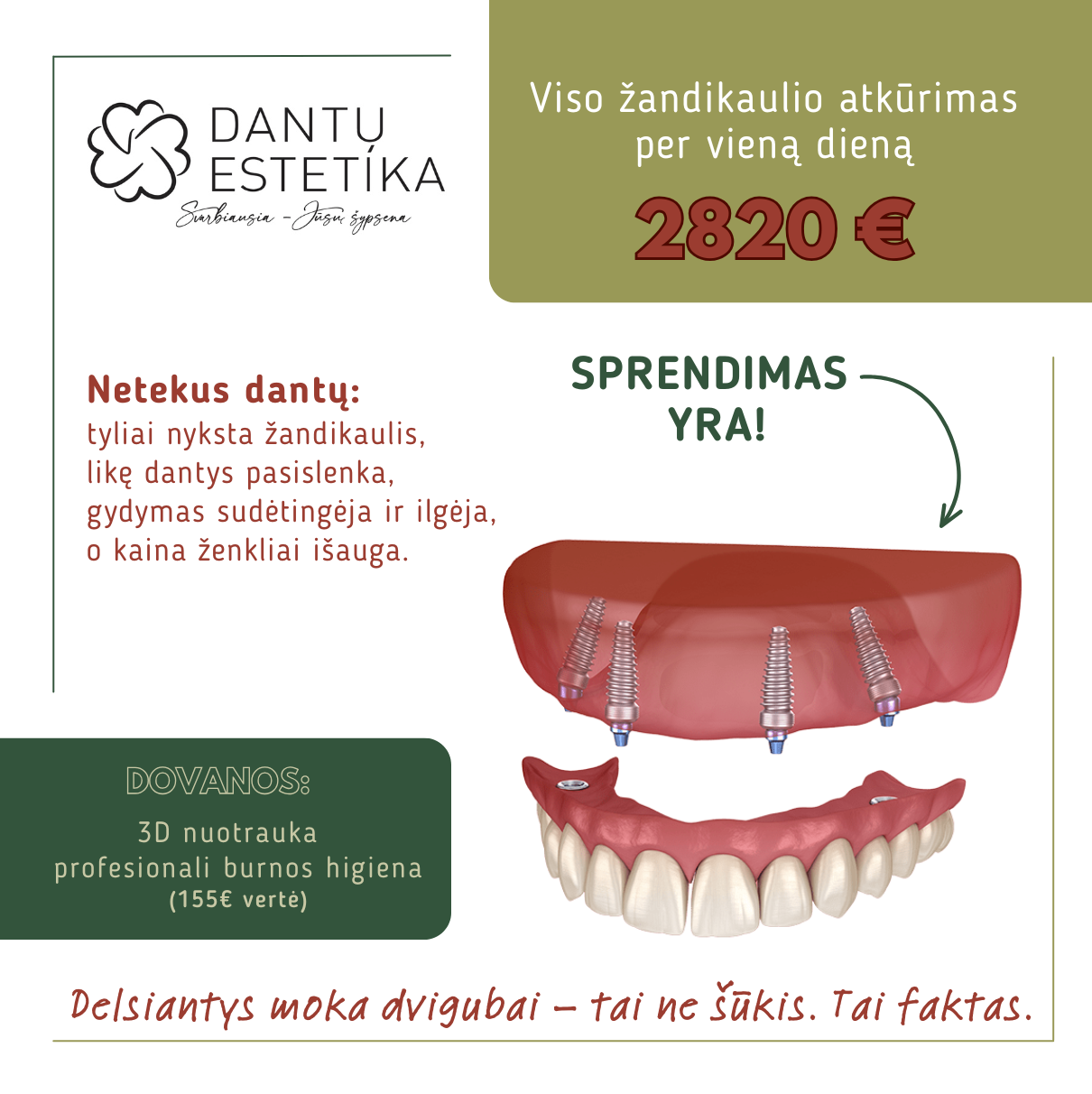Soft tissue grafting
Gum grafting
It is an augmentation of the soft tissues (gums) surrounding the teeth, correction around the teeth and implants. This procedure helps not only to create a more beautiful smile, but also to protect Your teeth from excessive sensitivity, inflammation, and the jaw from decline.
Gum grafting can be required for many reasons, such as: inflammation, trauma, improper tooth cleaning, improperly erupted teeth, or simply to ensure stable and aesthetically appealing implant results.
Depending on the situation, artificial gums, natural tissue transplantation or laser / surgical correction may be most appropriate.
Gum grafting surgery is performed:
- After dental implantation procedure. Fixed gums are attached around the implants in a way that leaves them stable while the lips and tongue move. They prevent inflammation of the tissues around the implant, loss of the surrounding bone and the implant itself.
- In the case of gums receding from the teeth, when the necks and/or roots of single or several teeth are exposed. Restoring the height of the gums in this case not only restores the aesthetic appearance of a smile, but also significantly reduces the risk of root caries and tooth sensitivity.
Clinical dental crown extension is performed:
- Before dentures or fillings if the tooth walls hide deeper under the gums.
- When a smile features too much gums in the upper jaw (“gummy smile”) or the teeth appear too short.
Sometimes little corrections are enough to make a smile much more appealing.
Important to know
Soft tissue (gum) correction procedures are not complicated when performed by experienced professionals. All modern periodontal procedures are performed according to a minimally invasive, tissue-sparing treatment protocol. As a result, You can feel comfortable both during and after the procedure and be assured of rapid tissue healing.
FAQ
How much does gum grafting cost?
It is not possible to apply a single price to all gum grafting cases - it depends on individual factors. These are: the specific condition of Your gums, the area of the gingival part being restored/adjusted, the materials and methods chosen, etc. Thus, the exact price is calculated for each procedure individually.
Is it a painful procedure?
Gum grafting surgery is performed under local anesthesia. As a result, You will not feel any discomfort during the procedure. Afterwards, You may experience pain and swelling, in which case You should take the medication prescribed by the doctor.
What to know when preparing for gum grafting?
Your dentist must be informed of Your medical condition if You have diabetes, cardiovascular or other conditions that may affect the course of procedures or healing.
Before the correction of the gums and during their healing, we strongly advise You not to smoke - smoking can complicate healing, hinder the achievement of the best functional and aesthetic results.
How long does it take for the gums to heal?
This usually takes 1-2 weeks.
How to care for gums after correction?
After the procedure, avoid touching the corrected areas with both Your tongue and fingers. In the first days, avoid extremely hot or cold food, drinks, choose products that are easy to chew, unsalted and not spicy. Also avoid drinking through a straw - suction can dislodge blood clots and cause bleeding.
Your doctor will instruct You in detail about all the nuances of care, as well as about brushing Your teeth after gum grafting.
Do gums go back to previous state after reduction?
No, if the procedure is done properly, the treatment results persist.



